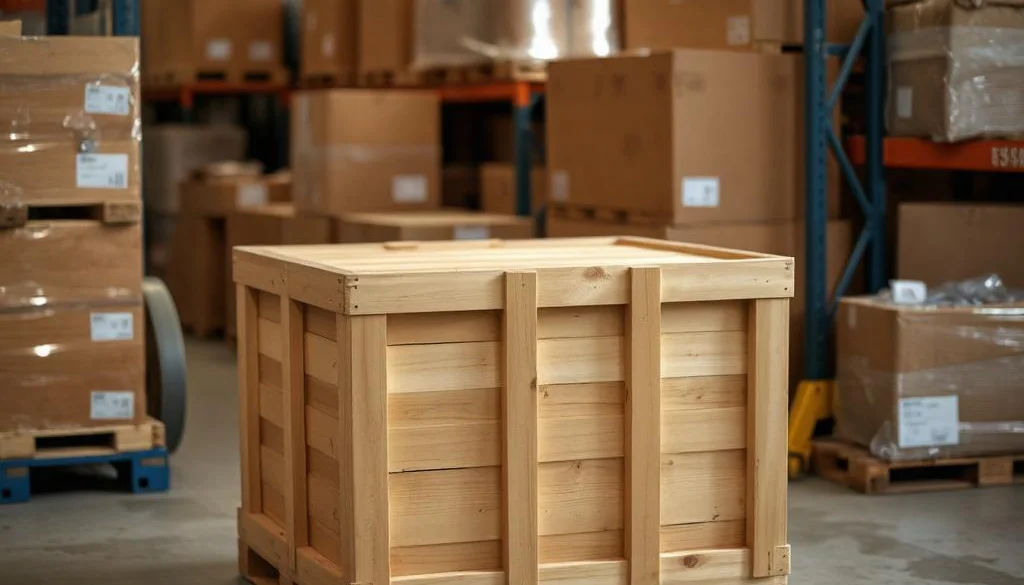
The Importance of Crating for Industrial Machinery
Industrial machinery is heavy, expensive, and often delicate, making it vulnerable during transport. This is why crating for industrial machinery is essential. Not only does it provide protection against impacts, vibrations, and harsh environmental conditions, but it also ensures compliance with shipping standards. Moreover, professional crating safeguards equipment, giving businesses peace of mind during transit.
Key Benefits of Using Crates for Machinery
Investing in reliable equipment protection through crating offers several key advantages, both for safety and compliance:
- Enhanced Protection
Crates effectively shield machinery from shocks, vibrations, and exposure to moisture or dust. For example, heavy equipment shipped overseas often requires reinforced crating to handle unpredictable conditions. Additionally, this protection helps prevent costly damage. - Custom Fit
Custom crates for equipment are specifically designed to match the exact size and weight of your machinery. As a result, items remain secure, avoiding movement during shipping that could cause internal damage. - Compliance with Shipping Standards
Proper crating adheres to international shipping regulations, such as ISPM-15 standards for wooden crates. Consequently, businesses can avoid delays, fines, or the risk of having their shipment held at customs.
Materials Used for Machinery Crating
The choice of materials plays a crucial role in ensuring safe machinery transport. To illustrate, here are the most commonly used materials:
- Plywood
Plywood is durable yet lightweight, making it ideal for providing strong protection without adding unnecessary weight. - Metal Reinforcements
For particularly heavy loads, metal reinforcements increase crate stability, ensuring structural integrity throughout the journey. - Foam Padding
Foam padding minimizes vibrations and absorbs shocks, which is especially useful for protecting delicate machinery components.
Tips for Effective Crating
To maximize the benefits of crating for industrial machinery, businesses should consider the following:
- Assess Potential Risks
Begin by identifying potential hazards such as moisture, impacts, or vibrations. By doing so, you can select the right materials to address these risks effectively. - Label Crates Clearly
Including labels such as “Fragile” or “Heavy Load” ensures that handlers manage shipments with extra care, further reducing the risk of damage. - Partner with Professionals
Collaborating with experts in industrial shipping solutions guarantees that your machinery is crated with precision and expertise.
Real-Life Examples of Machinery Crating Success
Case Study: A Manufacturer of CNC Machines
A CNC machine manufacturer adopted crating for industrial machinery to improve transport safety. By utilizing reinforced wooden crates and foam inserts, they reduced transit-related damages by 40%. Furthermore, this improvement boosted customer satisfaction.
Case Study: A Renewable Energy Company
A supplier of turbines shipped heavy equipment internationally using metal-reinforced crates. As a result, they ensured the safe arrival of machinery, avoided costly delays, and strengthened client trust.
Conclusion
Crating for industrial machinery is indispensable for businesses seeking to protect valuable equipment during transit. By ensuring enhanced safety, regulatory compliance, and reliable delivery, crating provides peace of mind and operational efficiency.
Contact us today to learn more about our industrial shipping solutions and how our custom crating services can secure your equipment during transit!




